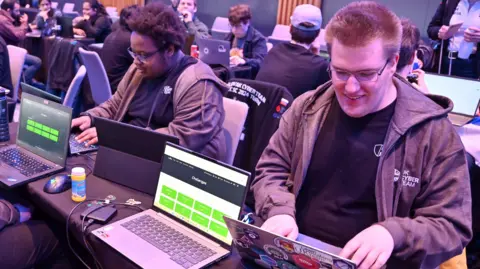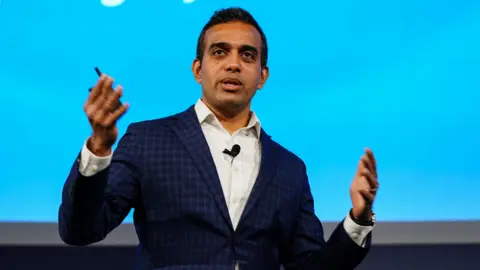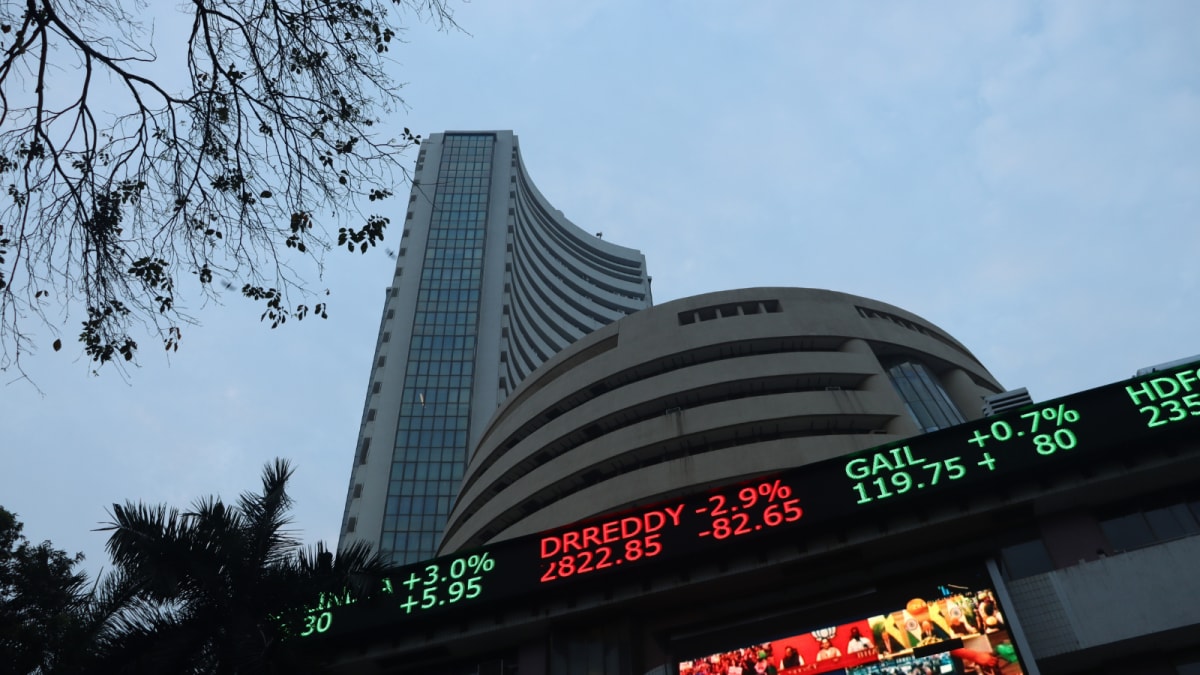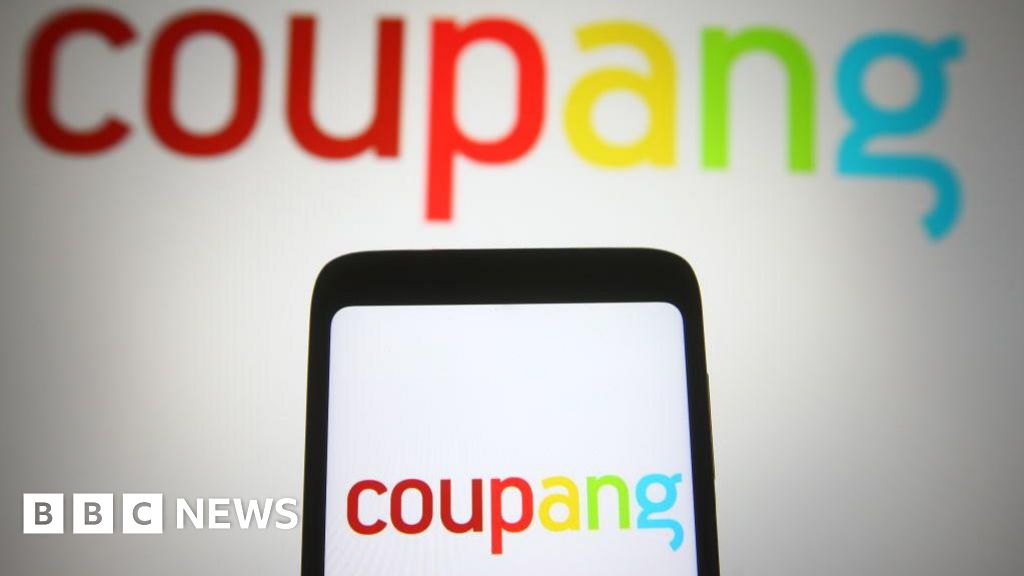Business
Computer science graduates struggle to secure their first jobs

Technology Reporter
 Eddie Hart
Eddie HartEddie Hart studied computer science and cybersecurity at Newcastle University, graduating in 2024.
He says he knew getting into the tech workforce would be a challenge, but “I thought it would be a little easier”.
Even when “junior” roles were advertised, they often demanded two or more years professional experience, Mr Hart says.
“It’s not realistic, and it’s just discouraging the good candidates from even trying.”
To him it seems clear that potential employers are using AI tools to automate the simpler parts of coder’s work, tasks which would traditionally allow newcomers to build up experience.
While companies undoubtedly benefit from using AI in some parts of their operations, says Mr Hart, “I don’t think replacing developers entirely with AI is sustainable.”
ChatGPT, and other coding tools, are being blamed for a collapse in tech job openings, particularly for younger software developers and engineers.
A report by the UK’s National Foundation for Education Research showed a 50% decline in tech job adverts between 2019/20 and 2024/25, with entry level roles particularly affected.
The report cited the “anticipated impact of artificial intelligence” as one of the factors behind this.
At the same time, software developers have widely adopted AI code tools, while simultaneously expressing distrust in their output.
Research by Stack Overflow, a software knowledge platform, shows almost half use AI tools daily, despite just one third actually trusting the output of such tools.
Prashanth Chandrasekar, CEO of Stack Overflow, says it’s “a tricky time to graduate”.
More broadly, he says, its research shows developers are choosing to stay put, despite many expressing dissatisfaction with their work. “People are probably running for safety a little bit.”
All of this means young technologists are finding it harder to get that critical first job.
 Stack Overflow
Stack OverflowThe stress of finding a job is also being raised by the use of AI in the job application process.
Mr Hart came across one highly automated application process which had eight stages, the first of which was to answer 20 exam-style questions about himself.
Such exercises can take up hours of time.
Friends had been asked to record and upload answers to interview style questions.
“And then that’s just reviewed by AI and a computer makes the decision. It just feels like you don’t get that respect of at least being rejected by a human,” he says.
Colin, who didn’t want his full name to be used, studied computer science at university, graduating in 2024.
He spent almost a year working through the recruitment process for one large company – only to be ultimately unsuccessful.
Even smaller firms often use AI to screen applications, he says, meaning CVs have to structured to be “AI friendly”.
Colin would then find he was being interviewed by people “who have clearly not read my CV”.
Both Mr Hart and Colin said they knew the senior roles were still out there. But, they wondered, who will fill them if younger developers like them were unable to secure jobs.
 InfluxData
InfluxDataPaul Dix, CTO and co-founder at California-based database firm, InfluxData says in any economic downturn or disruption, junior software developers were the ones who got hit hardest.
But he says, “If nobody’s hiring younger developers, then you’re going to arrive at this point where you don’t have senior developers either, because you’ve completely killed your pipeline.”
More positively says Rajiv Ramaswami, CEO of US enterprise cloud firm Nutanix, “Some of these younger folks coming out of college actually have more experience using AI tooling compared to traditional ways of programming.”
Ramaswami adds: “I find the market for talent to be the best we’ve seen in several years.”
Mr Chandrasekar says the industry had always had an “apprenticeship” type model, with a pipeline of young people coming in and working with senior developers.
And, he suggests, executives and companies that had invested heavily in AI tech are under pressure to show some return on that investment. Even if that was by simply cutting back on hiring.
Stack Overflow’s research also found that while 64% of developers perceived AI as a threat to their jobs, this was four percentage points down on the previous year.
“They’ve now seen some of the limitations, where you need humans in the loop,” Mr Chandrasekar notes.
Previous tech disruptions had sparked fears that both senior or junior jobs would disappear, says Mr Chandrasekar. But invariably they result in more jobs as people uncover new problems and challenges.
“There’s going to be an insatiable appetite for technologists and developers to go and build those things to help solve those problems.”
But that spike in demand might not come in time for some of today’s graduates.
Mr Hart has secured a role as a security engineer at UK-based cybersecurity firm Threatspike, which he gained through a very human centred job process.
Meanwhile, Colin has turned his back on tech altogether and is considering a career in the police.
Business
Key Financial Deadlines That Have Been Extended For December 2025; Know The Last Date

New Delhi: Several crucial deadlines have been extended in December 2025, including ITR for tax audit cases, ITR filing and PAN and Aadhaar linking. These deadlines will be crucial in ensuring that your financial affairs operate smoothly in the months ahead.
Here is a quick rundown of the important deadlines for December to help you stay compliant and avoid last-minute hassles.
ITR deadline for tax audit cases
The Central Board of Direct Taxes has extended the due date of furnishing of return of income under sub-Section (1) of Section 139 of the Act for the Assessment Year 2025-26 which is October 31, 2025 in the case of assessees referred in clause (a) of Explanation 2 to sub-Section (1) of Section 139 of the Act, to December 10, 2025.
Belated ITR filing deadline
A belated ITR filing happens when an ITR is submitted after the original due date which is permitted by Section 139(4) of the Income Tax Act. Filing a belated return helps you meet your tax obligations, but it involves penalties. You can only file a belated return for FY 2024–25 until December 31, 2025. However, there will be a late fee and interest charged.
PAN and Aadhaar linking deadline
The Income Tax Department has extended the deadline to link their PAN with Aadhaar card to December 31, 2025 for anyone who acquired their PAN using an Aadhaar enrolment ID before October 1, 2024. If you miss this deadline your PAN will become inoperative which will have an impact on your banking transactions, income tax return filing and other financial investments.
Business
Stock Market Live Updates: Sensex, Nifty Hit Record Highs; Bank Nifty Climbs 60,000 For The First Time

Stock Market News Live Updates: Indian equity benchmarks opened with a strong gap-up on Monday, December 1, touching fresh record highs, buoyed by a sharp acceleration in Q2FY26 GDP growth to a six-quarter peak of 8.2%. Positive cues from Asian markets further lifted investor sentiment.
The BSE Sensex was trading at 85,994, up 288 points or 0.34%, after touching an all-time high of 86,159 in early deals. The Nifty 50 stood at 26,290, higher by 87 points or 0.33%, after scaling a record intraday high of 26,325.8.
Broader markets also saw gains, with the Midcap index rising 0.27% and the Smallcap index advancing 0.52%.
On the sectoral front, the Nifty Bank hit a historic milestone by crossing the 60,000 mark for the first time, gaining 0.4% to touch a fresh peak of 60,114.05.
Meanwhile, the Metal and PSU Bank indices climbed 0.8% each in early trade.
Global cues
Asia-Pacific markets were mostly lower on Monday as traders assessed fresh Chinese manufacturing data and increasingly priced in the likelihood of a US Federal Reserve rate cut later this month.
According to the CME FedWatch Tool, markets are now assigning an 87.4 per cent probability to a rate cut at the Fed’s December 10 meeting.
China’s factory activity unexpectedly slipped back into contraction in November, with the RatingDog China General Manufacturing PMI by S&P Global easing to 49.9, below expectations of 50.5, as weak domestic demand persisted.
Japan’s Nikkei 225 slipped 1.6 per cent, while the broader Topix declined 0.86 per cent. In South Korea, the Kospi dropped 0.30 per cent and Australia’s S&P/ASX 200 was down 0.31 per cent.
US stock futures were steady in early Asian trade after a positive week on Wall Street. On Friday, in a shortened post-Thanksgiving session, the Nasdaq Composite climbed 0.65 per cent to 23,365.69, its fifth consecutive day of gains.
The S&P 500 rose 0.54 per cent to 6,849.09, while the Dow Jones Industrial Average added 289.30 points, or 0.61 per cent, to close at 47,716.42.
Business
South Korea: Online retail giant Coupang hit by massive data leak

Osmond ChiaBusiness reporter
 Getty Images
Getty ImagesSouth Korea’s largest online retailer, Coupang, has apologised for a massive data breach potentially involving nearly 34 million local customer accounts.
The country’s internet authority said that it is investigating the breach and that details from the millions of accounts have likely been exposed.
Coupang is often described as South Korea’s equivalent of Amazon.com. The breach marks the latest in a series of data leaks at major firms in the country, including its telecommunications giant, SK Telecom.
Coupang told the BBC it became aware of the unauthorised access of personal data of about 4,500 customer accounts on 18 November and immediately reported it to the authorities.
But later checks found that some 33.7 million customer accounts – all in South Korea – were likely exposed, said Coupang, adding that the breach is believed to have begun as early as June through a server based overseas.
The exposed data is limited to name, email address, phone number, shipping address and some order histories, Coupang said.
No credit card information or login credentials were leaked. Those details remain securely protected and no action is required from Coupang users at this point, the firm added.
The number of accounts affected by the incident represents more than half of South Korea’s roughly-52 million population.
Coupang, which is founded in South Korea and headquartered in the US, said recently that it had nearly 25 million active users.
Coupang apologised to its customers and warned them to stay alert to scams impersonating the company.
The firm did not give details on who is behind the breach.
South Korean media outlets reported on Sunday that a former Coupang employee from China was suspected of being behind the breach.
The authorities are assessing the scale of the breach as well as whether Coupang had broken any data protection safety rules, South Korea’s Ministry of Science and ICT said in a statement.
“As the breach involves the contact details and addresses of a large number of citizens, the Commission plans to conduct a swift investigation and impose strict sanctions if it finds a violation of the duty to implement safety measures under the Protection Act.”
The incident marks the latest in a series of breaches affecting major South Korean companies this year, despite the country’s reputation for stringent data privacy rules.
SK Telecom, South Korea’s largest mobile operator, was fined nearly $100m (£76m) over a data breach involving more than 20 million subscribers.
In September, Lotte Cards also said the data of nearly three million customers was leaked after a cyber-attack on the credit card firm.
-

 Sports1 week ago
Sports1 week agoWATCH: Ronaldo scores spectacular bicycle kick
-

 Entertainment1 week ago
Entertainment1 week agoWelcome to Derry’ episode 5 delivers shocking twist
-

 Politics1 week ago
Politics1 week agoWashington and Kyiv Stress Any Peace Deal Must Fully Respect Ukraine’s Sovereignty
-

 Business1 week ago
Business1 week agoKey economic data and trends that will shape Rachel Reeves’ Budget
-

 Tech6 days ago
Tech6 days agoWake Up—the Best Black Friday Mattress Sales Are Here
-

 Fashion7 days ago
Fashion7 days agoCanada’s Lululemon unveils team Canada kit for Milano Cortina 2026
-

 Tech6 days ago
Tech6 days agoThe Alienware Aurora Gaming Desktop Punches Above Its Weight
-

 Politics1 week ago
Politics1 week ago53,000 Sikhs vote in Ottawa Khalistan Referendum amid Carney-Modi trade talks scrutiny






